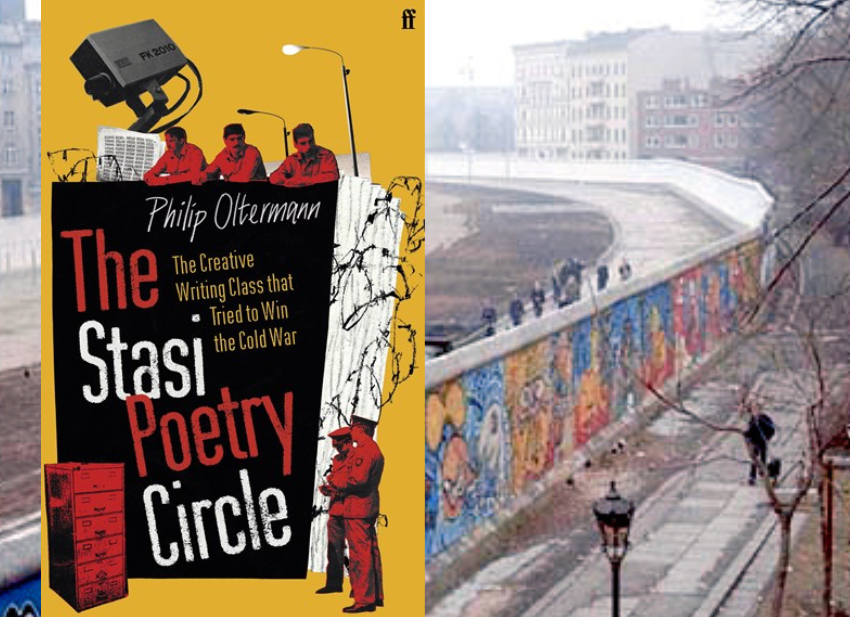
The Stasi Poetry Circle
By Philip Oltermann
Faber, 2022, 304 pp, $39.99
The Stasi Poetry Circle is such an interesting way to approach the Cold War. It has surface, and it has depth — both are equally thought-provoking.
On the surface, Philip Oltermann follows the poetry careers and trajectories of an assortment of East German (also known as the German Democratic Republic, GDR) citizens involved in cultural activities and who came into the orbit of the Stasi’s (secret police) incursions into cultural life. The real meat is in his illumination of the original Culture War, as prosecuted by the United States and enthusiastically responded to by the GDR and other Communist states.
For those of us who grew up in the West, the premise is implausible — a spy agency writing poetry? But East Germans were serious about poetry and literature.
Their interest was twofold. First, they wanted to ensure, following Stalin’s lead and obsession with “realism” that anything published needed to fit a certain mould, that it advanced the cause of socialism and was not “subversive” (always a handy, vague term).
The second was a genuine desire to promote literature, a “promise that high literacy will necessarily bring out the best in us”. In this vein, the GDR encouraged literary endeavours amongst working people … including its spies.
An early story in the book illustrates this well: that of the GDR’s Culture Minister, Johannes Becher. His vision was to end the separation between workers and intellectuals, to create a new model — a “literature society”.
Becher even had a view of what form of poetry would advance the literature of the new socialist society: the sonnet! Even Erich Honecker, the GDR’s last leader, championed his “country of readers” versus the “bestseller country” — West Germany.
The GDR had literary and jazz festivals, even a nascent hippie movement. As Oltermann quips, “so far, so utopian”.
But the paranoia that accompanied the Cold War, accelerated over time and spilled from military and political interventions into cultural ones.
From the 1950s, Oltermann details the US Central Intelligence Agency’s funding of cultural activities — including leading left-liberal journals and magazines across Europe — and the careers of leading Western artists. The CIA understood that the left-liberal perspective could be used as a bulwark against socialism — rather than leading to it, which it never has.
The GDR took the view, that its citizens needed to be shielded from Western propaganda — potentially pulling its citizens in the “perhaps capitalism can be reformed after all” direction — and produced plenty of its own in response.
The Stasi’s outfit, the Working Circle of Writing Chekists, wrote poetry — often bad poetry — ordinary rhymes extolling the virtues of the East German way of life. There were some stand-out poets, but the mission of the circle was mixed, because the spies in the circle spied on other artists and the Stasi’s role as censor blurred any possibilities for “free” expression.
Pure poetry it was not.
This book does a terrific job of balancing this broader context with the personal. Perhaps the most poignant story is of Annegret Gollin, who danced a crazy dance with the Stasi over a number of years. Considered a subversive, she was ultimately imprisoned for a poem that was never published.
Whether it was possible for the GDR to take another route, to allow more artistic freedoms, to demonstrate a socialism that could lead to fuller human expression, is a question lost to history.
But this book is a welcome corrective to those who view the GDR through Western-coloured lenses. And for those who think the only people that resisted the GDR’s worst excesses were those who tried to go over the Wall, it shows the complexity which faced those who tried to build societies outside of the capitalist paradigm.